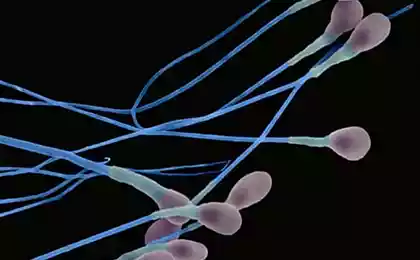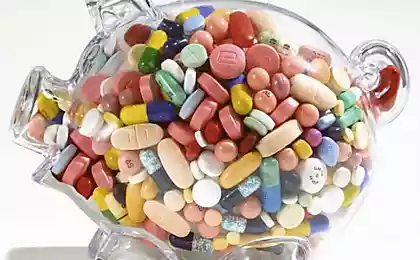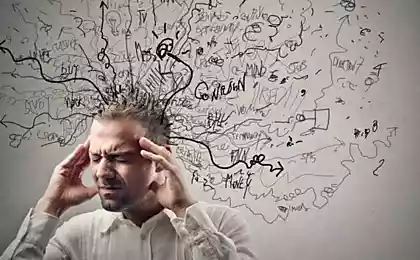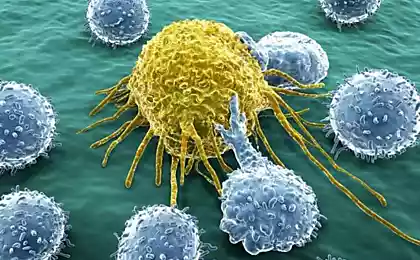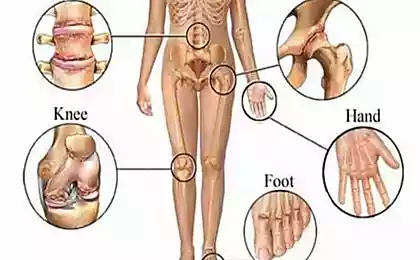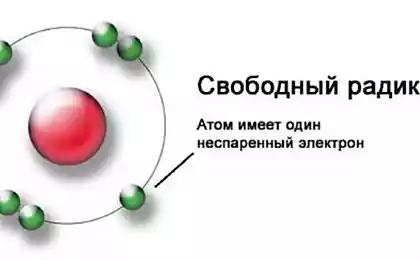506
IT IS IMPORTANT TO KNOW! Why you need antioxidants
Human existence in the conditions of modern technogenic civilization, the centuries-old breach between the people and the nature of the relationship, inevitably leads to the constant emergence of stressful situations, which leads to their accumulation and transformation into an integral component of existence and, ultimately, to the development of serious functional disorders in the body.
Violation of metabolism and energy accumulation active damaging agents, the so — called "free radicals" that trigger the development of diseases and psycho-emotional discomfort, called "oxidative stress". Chronic stress leads to immunosuppression, incoordination in the work of organs and systems, and therefore to disharmony in the body.
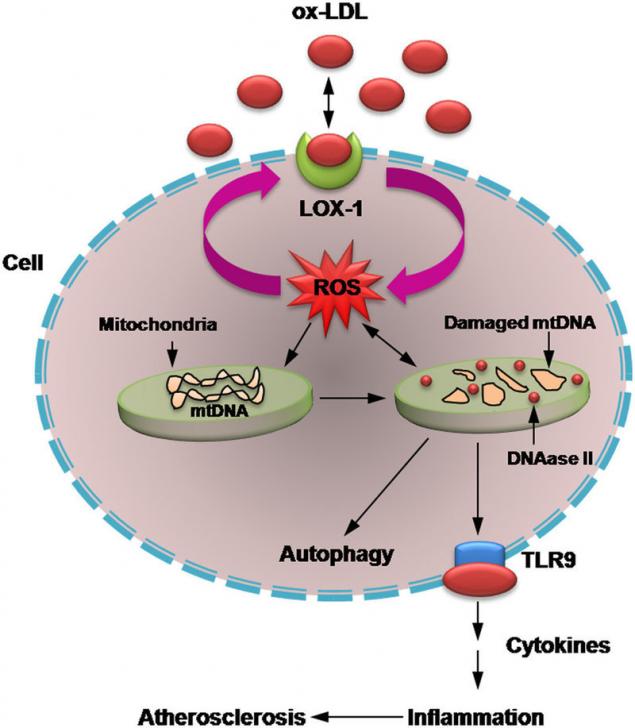
Limiting the ability of civilized man to communicate with nature leads to the fact that we live in an artificial world and have artificial health that is supported ecologically contaminated food products and chemically synthesized drugs, the use of which will inevitably cause the development of side effects.
Scientists have found that in the human body under the influence of the factors mentioned above, the formation of the so-called "free radicals" that are responsible for the accelerated destruction and deformation of the cells of the body.
What is free radical?
A free radical is formed at the moment when oxygen is involved in the metabolic process, loses an electron.
Trying to compensate for the loss of an electron, the free radical takes an electron, for example, the molecules included in the composition of the cell membrane, turning it into a new free radical. This chain reaction weakens the cell membrane, violates the integrity of the cells and opens the way to many degenerative diseases.
The ravages of excess concentrations of free radicals is manifested in the acceleration of aging processes of the organism, provoking inflammatory processes in muscular, connective and other tissues, improper functioning of the circulatory system, nervous system (including brain cells) and the immune system.
Let's touch briefly on the physical side of free radicals. Part of the outer orbit electrons moving from one atom to another. The electrons are constantly striving to create outside of one or more pairs, allowing chemical equilibrium.
Free radicals are highly unstable — a period of their existence sometimes does not exceed one millionth of a second. The aggressive behavior of these chemical agents causes a cascade of newly formed free radicals, each of which, in turn, generates its own chain of free radicals, and so on and so forth...
In short, we are dealing with the very real chemical bomb, exploding with the advent of the first free radical.
If biologists and physicians are excitedly talking about free radicals only a few years ago, physicists and chemists familiar with them for more than forty years. Generated radioactivity ionizing radiation penetrates through the material, causing the rapid formation of free radicals. A similar process occurs during cracking, i.e. oil refining. Activating a chain reaction caused by the flow of free radicals, and controlling its flow, scientists were able to create polymers and, thus, to manufacture the first plastic.
Free radicals in living organism
Despite the convincing physical experiments, until recently, none of the biologists had no idea what free radicals with equal success can occur and to die in the biochemical processes in the human body and animal.
That's why when in 1969, American researchers McCord and Fridovich said that the superoxide anion, a dangerous free radical is formed in vivo, i.e. in living body, and an enzyme such as superoxide dismutase (erythrocuprein) allows him to destroy their colleagues at research institutions all over the world reacted to their words with undisguised skepticism. But facts accumulated more and more, research in this area was in full swing and, in the end, I had to agree with the obvious: free radicals are really able to occur in a living organism.
Free radicals and cell damage
Today it has become apparent that the formation of free radicals is one of the universal pathogenetic mechanisms in different types of cell damage, including the following:
The effects of free radicals
Oxidation of unsaturated fatty acids in cell membrane composition is one of the major effects of free radicals. Free radicals also damage proteins (particularly thiol-containing) DNA. The morphological outcome of lipid oxidation of the cell wall is the formation of polar channels of permeability, which increases the passive membrane permeability for ions Ca2+, the excess of which is deposited in the mitochondria.
The oxidation reaction is usually suppressed hydrophobic antioxidants such as vitamin E and glutathione peroxidase.
Similar to vitamin E antioxidants that interrupt the chain of oxidation, contained in fresh vegetables and fruits.
Free radicals also react with molecules in ionic and aqueous environment of the cell compartments.
In the ionic environment antioxidant capacity to retain molecules of substances such as restored glutathione, ascorbic acid and cysteine. The protective properties of antioxidants become obvious when the depletion of their stocks in an isolated cell observed characteristic morphological and functional changes caused by oxidation of cell membrane lipids.
Types are caused by free radical damage are determined not only by the aggressiveness of the produced radicals, and structural and biochemical characteristics of the object of influence. For example, in the extracellular space, the free radicals attack glycosaminoglycans of the basic substance of connective tissue, which may be one of the mechanisms of destruction of the joints (e.g. rheumatoid arthritis). Free radicals alter the permeability (and therefore barrier function) of cytoplasmic membranes in connection with the formation of channels of increased permeability that leads to disruption of water and ion homeostasis of the cell.
The role of bioflavonoids in prevention of oxidative stress
Travelers and Wanderers, the diet which, for obvious reasons, was extremely poor, often experienced different disorders, ailments and illnesses. The first reliable information about the negative effects associated with lack of essential nutrients, refer to the beginning of the XIII century and related diseases among the crews of ships.
More widely, this so-called "sea scurvy" in the second half of the XV century, during the world of seafaring adventures. Such an epidemic befell, for example, the crew of Vasco de Gama in 1495 on his way to India, and from 160 people more than a hundred died.
The expedition of the famous French traveler Jacques Cartier in 1534, was trapped by ice in the Gulf of St. Lawrence and spent the winter on the territory of the province of Quebec (Canada). Forced to eat mostly corned beef, many members of the expedition became ill and died zyngas. Fortunately, by chance met an Indian dying revealed the secret of the preparation of the drug from the bark and needles of one of the evergreen trees (Anneda pine tree) growing in the area. Cartier took advantage of this Council, which allowed him almost a week to bring up a survivor team.
Four centuries later, modern scholars have paid attention to a group of natural substances found in plants — so-called flavonoids. The presence of flavonoids in plants protects them from damaging effects of ultraviolet rays of the sun.
The bioflavonoids include flavonoids that possess biological activity towards the human. Bioflavonoids have the ability to bind free radicals.
Bioflavonoids were discovered by albert Szent-Georgi, awarded for it the Nobel Prize. He called bioflavonoids "vitamin P" (vitamin P), but this name did not stick because it turned out that this is not a single substance but a natural mix.
Well-known researcher, biochemist, Richard Passwater made an enormous contribution to the understanding of the processes occurring when using antioxidants. His pioneer work on the possibility of slowing the aging process appeared in print in 1971, when the terms "free radical" and "antioxidant therapy" was familiar to only a very narrow circle of professionals. Two years later, Dr. Passwater published the results of his cancer research, where most researchers first learned that there is a relationship between free radicals and diseases such.
In 1977 he published fundamental work on the role of free radicals.
Noted that no class of natural substances does not have numerous and diverse effects on the biological activity of human and animal cells as bioflavonoids.
Pharmacological action of antioxidants due to their ability to bind free radicals (active biomolecules that destroy the genetic apparatus of cells and the structure of their membranes) and to decrease the intensity of oxidative processes in the body.
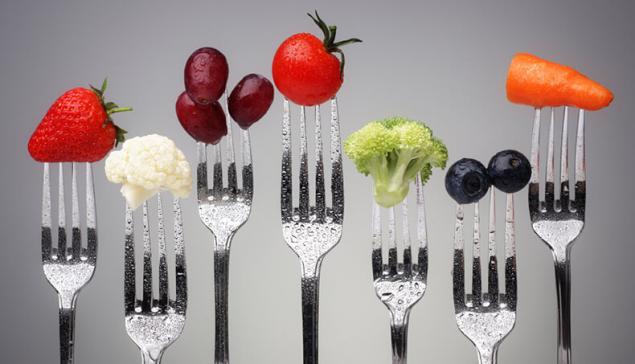
The role of antioxidants in prevention of various diseases
Cardiovascular disease. Antioxidants are highly effective in preventing the occurrence and progression of atherosclerosis, because inhibit the formation of blood clots and atherosclerotic plaques on the walls of blood vessels. Antioxidants are the best "cleaner" of the blood vessels, their use allows several times to reduce the risk of diseases hypertension, angina pectoris, myocardial infarction, and stroke, as well as varicose veins and thrombophlebitis.
Numerous studies have shown that the main cause of coronary heart disease (CHD) is a coronary artery spasm. According to recent studies important role in the development of atherosclerosis and CHD withdrawn oxidized low-density lipoproteins (LDL), which may be involved in the pathogenesis. The formation of oxidized LDL enhances the ability of coronary vessels to shrink and reduces endothelium-dependent relaxation.
Confirmed that antioxidants increase the resistance of LDL when added to plasma, in addition, they have antithrombotic properties and inhibit the proliferation of vascular smooth muscle. Previously it was shown that the content of antioxidants in plasma is inversely associated with risk of angina. Recent research has convincingly demonstrated the relationship of the content of antioxidants in plasma with spastic activity of the coronary artery.
Diabetes. Antioxidants effectively reduce the fragility of blood vessels (including capillaries of the eye), it allows to use them for successful prevention and treatment of diabetic retinopathy.
Cancer. Antioxidants have the ability to dramatically slow the growth of tumors and inhibits their development, which allows their use for the treatment and prevention of cancer and other oncological diseases.
Anti-inflammatory effect of antioxidants due to the binding of histamine and gistaminopodobnykh substances that enable successful use of this drug for arthritis, rheumatism, lupus erythematosus, ulcerative colite, hay fever, and also to prevent sports injuries.
A tonic and restorative effect on the Central nervous system. Antioxidants improve blood flow and metabolism in the Central nervous system that accelerates the recovery of function after damage to the Central nervous system, improves memory, vision, hearing.
Stressprotectivna action of antioxidants due to the fact that this drug prevents the formation of ulcers and hemorrhages in the walls of the stomach and intestines caused by external stimuli; normalizes the function of the nervous, immune and endocrine systems.
Radioprotective action of antioxidants due to their high ability to bind and neutralize the damaging effects of free radicals produced by ionizing radiation. Can be used for the prevention and treatment of radiation sickness.
Cosmetic action. Antioxidants provide effective protection of elastin and collagen (protein of the connective tissue of the skin) from the damaging effects of free radicals, reinforce the intertwining of the collagen fibers with elastin chain. This achieves a significant slowing of age-related processes loss of firmness and elasticity, appearance of wrinkles and senile spots.
The biological effect of natural antioxidants
As a result of numerous studies in recent decades have developed the idea that the unity of the structure and function of biological membranes is closely related to processes of lipid peroxidation (LPO) that compose the structural basis of the lipid bilayer.
Found that many biosynthetic and degradative processes involve mechanisms of oxidative transformations of lipids. No doubt that processes of GENDER cell membranes are most important from a biological point of view. Dysregulation of GENDER are currently considering as a pathogenetic marker of a number of diseases.
From this position, the study of the biological role of bioantioxidants as factors that can regulate the intensity of lipid peroxidation, is given a particularly important consideration.
Among the natural antioxidants include Tocopherols, carotenoids, vitamins a, K, ubihinona (UH) (coenzyme Q), Ubirata (QC), flavonoids.
It is established that the antioxidant function of these compounds combine with a wide range of biological effects, not directly related to antioxidant activity. Specific biochemical manifestations of bioantioxidants diverse and focused on various structural, metabolic and regulatory systems of the body.
The impact of the shortage of antioxidants on lipid metabolism
The effects of antioxidants demonstrated in a number of complex effects on all levels of the organization from membrane formations to the organism as a whole. It is shown that when a deficiency of antioxidants are observed in diverse pathological changes of a large number of organs and tissues of animals and humans.
The global myth of the progesterone — read for all women!Exercise longevity: 3 key points of the body
Among the major symptoms of antioxidant deficiency are observed: disorders of the reproductive function, muscle degeneration, necrosis of the liver, damage to the epithelium of the renal tubules, etc. Marked morphological changes that were characteristic of cells of various tissues and are to a significant increase in permeability or the total destruction of cytoplasmic or intracellular membranes, including mitochondria and microsomes.
In this case, morphological anomalies precede changes in fatty acid composition of lipids, reducing the concentration of polyunsaturated fatty acids (Pufas). These disorders at the molecular level can be explained by the increased level of peroxidation.published
Source: www.childneurologyinfo.com/health-text-biochem4.php
Violation of metabolism and energy accumulation active damaging agents, the so — called "free radicals" that trigger the development of diseases and psycho-emotional discomfort, called "oxidative stress". Chronic stress leads to immunosuppression, incoordination in the work of organs and systems, and therefore to disharmony in the body.

Limiting the ability of civilized man to communicate with nature leads to the fact that we live in an artificial world and have artificial health that is supported ecologically contaminated food products and chemically synthesized drugs, the use of which will inevitably cause the development of side effects.
Scientists have found that in the human body under the influence of the factors mentioned above, the formation of the so-called "free radicals" that are responsible for the accelerated destruction and deformation of the cells of the body.
What is free radical?
A free radical is formed at the moment when oxygen is involved in the metabolic process, loses an electron.
Trying to compensate for the loss of an electron, the free radical takes an electron, for example, the molecules included in the composition of the cell membrane, turning it into a new free radical. This chain reaction weakens the cell membrane, violates the integrity of the cells and opens the way to many degenerative diseases.
The ravages of excess concentrations of free radicals is manifested in the acceleration of aging processes of the organism, provoking inflammatory processes in muscular, connective and other tissues, improper functioning of the circulatory system, nervous system (including brain cells) and the immune system.
Let's touch briefly on the physical side of free radicals. Part of the outer orbit electrons moving from one atom to another. The electrons are constantly striving to create outside of one or more pairs, allowing chemical equilibrium.
Free radicals are highly unstable — a period of their existence sometimes does not exceed one millionth of a second. The aggressive behavior of these chemical agents causes a cascade of newly formed free radicals, each of which, in turn, generates its own chain of free radicals, and so on and so forth...
In short, we are dealing with the very real chemical bomb, exploding with the advent of the first free radical.
If biologists and physicians are excitedly talking about free radicals only a few years ago, physicists and chemists familiar with them for more than forty years. Generated radioactivity ionizing radiation penetrates through the material, causing the rapid formation of free radicals. A similar process occurs during cracking, i.e. oil refining. Activating a chain reaction caused by the flow of free radicals, and controlling its flow, scientists were able to create polymers and, thus, to manufacture the first plastic.
Free radicals in living organism
Despite the convincing physical experiments, until recently, none of the biologists had no idea what free radicals with equal success can occur and to die in the biochemical processes in the human body and animal.
That's why when in 1969, American researchers McCord and Fridovich said that the superoxide anion, a dangerous free radical is formed in vivo, i.e. in living body, and an enzyme such as superoxide dismutase (erythrocuprein) allows him to destroy their colleagues at research institutions all over the world reacted to their words with undisguised skepticism. But facts accumulated more and more, research in this area was in full swing and, in the end, I had to agree with the obvious: free radicals are really able to occur in a living organism.
Free radicals and cell damage
Today it has become apparent that the formation of free radicals is one of the universal pathogenetic mechanisms in different types of cell damage, including the following:
- reperfusion of the cells after a period of ischemia;
- some drug-induced forms of haemolytic anemia;
- poisoning some herbicides;
- the poisoning with carbon tetrachloride;
- ionizing radiation;
- some aging mechanisms of the cell (for example, the accumulation of lipid products in the cell — zerodb and lipofuscin);
- kislorodolechenie;
- atherogenesis is due to the oxidation of LDL in cells of the arterial wall.
Free radicals are involved in the following processes: - aging;
- carcinogenesis;
- chemical and drug damage to the cells;
- inflammation;
- radioactive damage;
- of atherogenesis;
- oxygen and ozone toxicity.
The effects of free radicals
Oxidation of unsaturated fatty acids in cell membrane composition is one of the major effects of free radicals. Free radicals also damage proteins (particularly thiol-containing) DNA. The morphological outcome of lipid oxidation of the cell wall is the formation of polar channels of permeability, which increases the passive membrane permeability for ions Ca2+, the excess of which is deposited in the mitochondria.
The oxidation reaction is usually suppressed hydrophobic antioxidants such as vitamin E and glutathione peroxidase.
Similar to vitamin E antioxidants that interrupt the chain of oxidation, contained in fresh vegetables and fruits.
Free radicals also react with molecules in ionic and aqueous environment of the cell compartments.
In the ionic environment antioxidant capacity to retain molecules of substances such as restored glutathione, ascorbic acid and cysteine. The protective properties of antioxidants become obvious when the depletion of their stocks in an isolated cell observed characteristic morphological and functional changes caused by oxidation of cell membrane lipids.
Types are caused by free radical damage are determined not only by the aggressiveness of the produced radicals, and structural and biochemical characteristics of the object of influence. For example, in the extracellular space, the free radicals attack glycosaminoglycans of the basic substance of connective tissue, which may be one of the mechanisms of destruction of the joints (e.g. rheumatoid arthritis). Free radicals alter the permeability (and therefore barrier function) of cytoplasmic membranes in connection with the formation of channels of increased permeability that leads to disruption of water and ion homeostasis of the cell.
The role of bioflavonoids in prevention of oxidative stress
Travelers and Wanderers, the diet which, for obvious reasons, was extremely poor, often experienced different disorders, ailments and illnesses. The first reliable information about the negative effects associated with lack of essential nutrients, refer to the beginning of the XIII century and related diseases among the crews of ships.
More widely, this so-called "sea scurvy" in the second half of the XV century, during the world of seafaring adventures. Such an epidemic befell, for example, the crew of Vasco de Gama in 1495 on his way to India, and from 160 people more than a hundred died.
The expedition of the famous French traveler Jacques Cartier in 1534, was trapped by ice in the Gulf of St. Lawrence and spent the winter on the territory of the province of Quebec (Canada). Forced to eat mostly corned beef, many members of the expedition became ill and died zyngas. Fortunately, by chance met an Indian dying revealed the secret of the preparation of the drug from the bark and needles of one of the evergreen trees (Anneda pine tree) growing in the area. Cartier took advantage of this Council, which allowed him almost a week to bring up a survivor team.
Four centuries later, modern scholars have paid attention to a group of natural substances found in plants — so-called flavonoids. The presence of flavonoids in plants protects them from damaging effects of ultraviolet rays of the sun.
The bioflavonoids include flavonoids that possess biological activity towards the human. Bioflavonoids have the ability to bind free radicals.
Bioflavonoids were discovered by albert Szent-Georgi, awarded for it the Nobel Prize. He called bioflavonoids "vitamin P" (vitamin P), but this name did not stick because it turned out that this is not a single substance but a natural mix.
Well-known researcher, biochemist, Richard Passwater made an enormous contribution to the understanding of the processes occurring when using antioxidants. His pioneer work on the possibility of slowing the aging process appeared in print in 1971, when the terms "free radical" and "antioxidant therapy" was familiar to only a very narrow circle of professionals. Two years later, Dr. Passwater published the results of his cancer research, where most researchers first learned that there is a relationship between free radicals and diseases such.
In 1977 he published fundamental work on the role of free radicals.
Noted that no class of natural substances does not have numerous and diverse effects on the biological activity of human and animal cells as bioflavonoids.
Pharmacological action of antioxidants due to their ability to bind free radicals (active biomolecules that destroy the genetic apparatus of cells and the structure of their membranes) and to decrease the intensity of oxidative processes in the body.

The role of antioxidants in prevention of various diseases
Cardiovascular disease. Antioxidants are highly effective in preventing the occurrence and progression of atherosclerosis, because inhibit the formation of blood clots and atherosclerotic plaques on the walls of blood vessels. Antioxidants are the best "cleaner" of the blood vessels, their use allows several times to reduce the risk of diseases hypertension, angina pectoris, myocardial infarction, and stroke, as well as varicose veins and thrombophlebitis.
Numerous studies have shown that the main cause of coronary heart disease (CHD) is a coronary artery spasm. According to recent studies important role in the development of atherosclerosis and CHD withdrawn oxidized low-density lipoproteins (LDL), which may be involved in the pathogenesis. The formation of oxidized LDL enhances the ability of coronary vessels to shrink and reduces endothelium-dependent relaxation.
Confirmed that antioxidants increase the resistance of LDL when added to plasma, in addition, they have antithrombotic properties and inhibit the proliferation of vascular smooth muscle. Previously it was shown that the content of antioxidants in plasma is inversely associated with risk of angina. Recent research has convincingly demonstrated the relationship of the content of antioxidants in plasma with spastic activity of the coronary artery.
Diabetes. Antioxidants effectively reduce the fragility of blood vessels (including capillaries of the eye), it allows to use them for successful prevention and treatment of diabetic retinopathy.
Cancer. Antioxidants have the ability to dramatically slow the growth of tumors and inhibits their development, which allows their use for the treatment and prevention of cancer and other oncological diseases.
Anti-inflammatory effect of antioxidants due to the binding of histamine and gistaminopodobnykh substances that enable successful use of this drug for arthritis, rheumatism, lupus erythematosus, ulcerative colite, hay fever, and also to prevent sports injuries.
A tonic and restorative effect on the Central nervous system. Antioxidants improve blood flow and metabolism in the Central nervous system that accelerates the recovery of function after damage to the Central nervous system, improves memory, vision, hearing.
Stressprotectivna action of antioxidants due to the fact that this drug prevents the formation of ulcers and hemorrhages in the walls of the stomach and intestines caused by external stimuli; normalizes the function of the nervous, immune and endocrine systems.
Radioprotective action of antioxidants due to their high ability to bind and neutralize the damaging effects of free radicals produced by ionizing radiation. Can be used for the prevention and treatment of radiation sickness.
Cosmetic action. Antioxidants provide effective protection of elastin and collagen (protein of the connective tissue of the skin) from the damaging effects of free radicals, reinforce the intertwining of the collagen fibers with elastin chain. This achieves a significant slowing of age-related processes loss of firmness and elasticity, appearance of wrinkles and senile spots.
The biological effect of natural antioxidants
As a result of numerous studies in recent decades have developed the idea that the unity of the structure and function of biological membranes is closely related to processes of lipid peroxidation (LPO) that compose the structural basis of the lipid bilayer.
Found that many biosynthetic and degradative processes involve mechanisms of oxidative transformations of lipids. No doubt that processes of GENDER cell membranes are most important from a biological point of view. Dysregulation of GENDER are currently considering as a pathogenetic marker of a number of diseases.
From this position, the study of the biological role of bioantioxidants as factors that can regulate the intensity of lipid peroxidation, is given a particularly important consideration.
Among the natural antioxidants include Tocopherols, carotenoids, vitamins a, K, ubihinona (UH) (coenzyme Q), Ubirata (QC), flavonoids.
It is established that the antioxidant function of these compounds combine with a wide range of biological effects, not directly related to antioxidant activity. Specific biochemical manifestations of bioantioxidants diverse and focused on various structural, metabolic and regulatory systems of the body.
The impact of the shortage of antioxidants on lipid metabolism
The effects of antioxidants demonstrated in a number of complex effects on all levels of the organization from membrane formations to the organism as a whole. It is shown that when a deficiency of antioxidants are observed in diverse pathological changes of a large number of organs and tissues of animals and humans.
The global myth of the progesterone — read for all women!Exercise longevity: 3 key points of the body
Among the major symptoms of antioxidant deficiency are observed: disorders of the reproductive function, muscle degeneration, necrosis of the liver, damage to the epithelium of the renal tubules, etc. Marked morphological changes that were characteristic of cells of various tissues and are to a significant increase in permeability or the total destruction of cytoplasmic or intracellular membranes, including mitochondria and microsomes.
In this case, morphological anomalies precede changes in fatty acid composition of lipids, reducing the concentration of polyunsaturated fatty acids (Pufas). These disorders at the molecular level can be explained by the increased level of peroxidation.published
Source: www.childneurologyinfo.com/health-text-biochem4.php
